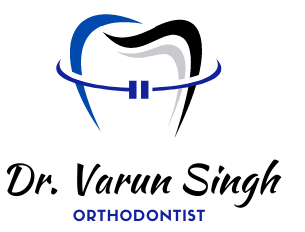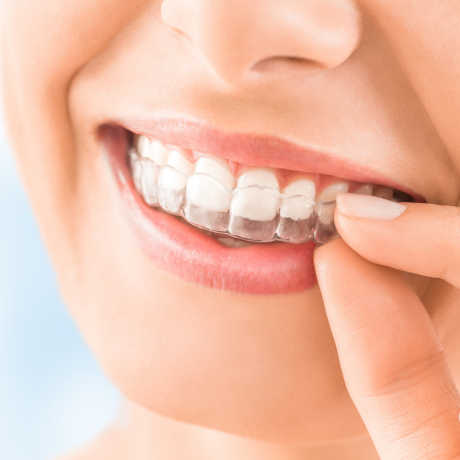Invisalign refinements
How Invisalign Refinements Work
We’ve recently seen an increase in people wanting to align their bite through Invisalign, for reasons related to both wellness and aesthetics. But what does it truly take to get the smile you desire? The answer could be “refinements”. Since we’re big on transparency, we wanted to spend some time talking about what refinements are and why you might end up needing one.
Imagine this: You’ve committed to Invisalign, and think you’re doing a pretty good job following your dentist’s recommendations. You wear your trays for almost 22 hours a day (most of the time), come in for your 6 week progress checks, and you’re almost finished…except your dentist mentions you might need a “refinement” to get some teeth back on track. What gives?!
What is a refinement?
In a perfect world, the Invisalign process is a breeze and teeth move perfectly into place. For the majority of patients this is the case! However, in about a third of cases we’ll notice that the teeth aren’t moving into position exactly as planned. When this happens, a new set of aligners may be needed to “refine” the process. This usually takes place near the end of your treatment.
What is involved in the refinement process?
If we determine that you’ll need a refinement, we’ll take a new 3D scan of your teeth and fresh digital pictures to send to Invisalign. We’ll approve a new ClinCheck for you, and order additional aligner trays so you can start to “fine tune” your results. These refinement trays are exactly the same as your Invisalign trays, just with an adjusted course, so you’ll still need to wear them 22 hours a day, 7 days a week.
Every case is different, but refinement aligners typically add an average of 3 extra months onto the original Invisalign plan. A refinement might also add cost to the treatment depending on the scope. It’s also worth noting that you may receive a series of refinement aligners and not just “a” refinement aligner. How many you receive will depend on your unique case and treatment plan.
Factors that might increase your chance of needing a refinement:
- Not wearing your aligners properly and not wearing them the full 22 hours a day (for example, taking them out to eat and forgetting to put them back in after several hours)
- Losing your aligners and not getting replacements right away
- Not wearing your aligners for a long period of time due to an illness or accident
- Broken or cracked aligners
- Dental treatment that alters the shape of your teeth and affects the fit of your aligners
- Complex movements of difficult teeth
- Genetically slow movement of teeth
So after refinements, am I done with aligners?
Not exactly…once the refinement process is finished the final stage is Invisalign retainers. These are needed to “retain” all of that movement and hard work you put into shifting your teeth into their ideal positions. For the first six weeks, you’ll need to wear your retainers for 22 hours a day. Then you’ll move on to wearing the retainers solely at night. Again, every case is different so please consult your dentist for how long you should wear your retainers for. Typically the rule of thumb is to wear your retainers for as long as you want to keep your teeth straight… so this is certainly a long-term commitment!
Is it Bad if I Need Invisalign Refinements?
Getting Invisalign refinements doesn’t always indicate a personal failing on your end. There are numerous reasons why your orthodontist could decide to add refinements to your treatment plan. Some difficult and stubborn teeth may simply move slower than anticipated, or a patient may end up needing to undergo a dental treatment that alters the shape of their teeth. As a result, their aligners no longer fit properly. If you lose or accidentally break your aligners, you will also need to replace them. Other reasons why you might need Invisalign refinements include:
Failing to wear your aligners for the recommended 20 to 22 hours a day
Going through a long period of time without wearing your aligner due to an illness or accident
Having teeth that move differently than anticipated
Some things are out of your control, such as the speed at which your teeth move. But you can still make sure you are following best practices for wearing and taking care of your aligners.
How Can I Make Sure My Treatment Goes According to Plan?
Make sure you are following these best practices for your Invisalign treatment.
In order to effectively transform your smile, clear aligners need to be appropriately seated on your teeth. That’s why Dr. Varun will recommend that you use Invisalign chewies every time you reinsert them, and especially early in a tray cycle. Gently chewing on these products will help them seat correctly, so the aligners can do their job!
Sometimes people have stubborn teeth, or one tooth in particular that doesn’t respond as well to the treatment. There’s not much you can do in these cases, and it’s why we offer refinements in the first place. But you still need to make sure you are wearing them properly and for at least 22 hours a day, change your trays in the right order, and remember to place them back into your mouth after eating or drinking. If you lose or break your aligner, you need to contact your orthodontist as soon as possible. The sooner you can get replacement aligners, the better.
Daily Care and Maintenance of Aligners
If you have just had a scan for a new set of aligners, this is completely normal and we do this for every singly patient in aligner therapy. In fact, we do this a few times throughout to get new aligners that fit perfectly. While you wait for your new aligners, please review and follow the instructions below:
- Wear your current set of aligners every night (minimum 10-12 hours/day) and do not change these aligners.
- If your aligners feel tight then increase wear to full time.
- Continue to be diligent with the cleaning of your teeth and aligners as you will be wearing this current set for a longer duration than normal.
- Please follow the instructions given by the orthodontist regarding elastic wear.
- This period of 12 hours/day is just temporary. Once your new aligners arrive you will resume full time wear.



